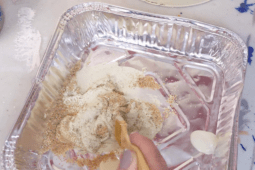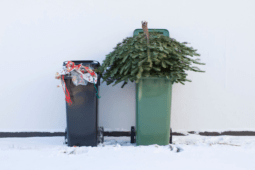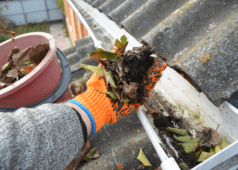Spot This Bug? Here’s What to Do Immediately!
Imagine stepping into your garden, only to find your prized vegetables and fruits covered in unsightly brown stains. This nightmare scenario is becoming increasingly common as the brown marmorated stink bug continues its relentless spread across the United States and beyond. These shield-shaped invaders may seem harmless at first glance, but their destructive potential is alarming.
The Rise of an Invasive Species

The brown marmorated stink bug, scientifically known as Halyomorpha halys, is not native to North America. This pesky insect originated in Asia, primarily in countries like China, Japan, and Korea. Its journey to the United States began in 1998 when it was accidentally introduced in Allentown, Pennsylvania. Since then, the stink bug has spread rapidly, now infesting 44 out of 50 states in just 25 years.
Identifying the Culprit

Recognizing these invaders is crucial for effective control. Adult brown marmorated stink bugs are about 0.7 inches long and have a distinctive shield-shaped body. Their brown coloration helps them blend in with their surroundings, making them challenging to spot. These insects have six legs and are equipped with wings, allowing them to fly and easily access new areas.
The Stink Bug’s Destructive Nature

Don’t let their small size fool you – stink bugs can cause significant damage to crops and gardens. These pests have a particular fondness for fruits and vegetables, leaving behind brown stains where they feed. In 2010 alone, farmers lost approximately $40 million worth of apples due to stink bug infestations. Even worse, they can taint entire wine supplies with their notorious odor.
Climate Change: A Stink Bug’s Best Friend

As our planet continues to warm, the brown marmorated stink bug finds itself in an increasingly favorable environment. These insects thrive in warm weather and are expanding their range into new territories. Research published in the International Journal of Biometeorology predicts that climate change will promote the establishment of stink bugs in previously unsuitable areas, such as higher altitudes in alpine valleys.
Protecting Your Home from Invasion

Stink bugs don’t limit themselves to outdoor spaces; they often find their way into homes, seeking shelter during colder months. To prevent these unwanted guests from entering your living space, consider the following steps:
1. Seal all openings: Use a reliable sealant to close off any potential entry points around windows, doors, and other openings.
2. Remove outdoor hiding spots: Clear your yard of weeds, debris, and unnecessary lawn ornaments that may provide shelter for stink bugs.
3. Use homemade repellents: Create a mixture of kaolin clay solution, dish soap, and water to spray around your property. This natural repellent deters stink bugs without harming plants.
4. Employ the “trap plant” method: Plant yellow flowers, such as sunflowers, away from your main garden to lure stink bugs away from your prized crops.
5. Vacuum when necessary: If stink bugs do make it inside, use a vacuum cleaner to remove them quickly. Be sure to dispose of the vacuum bag promptly to avoid lingering odors.
Natural Remedies for Stink Bug Control

In addition to the methods mentioned above, several natural remedies can help keep stink bugs at bay:
1. Catnip: This plant contains compounds that repel various insects, including stink bugs.
2. Diatomaceous earth: Sprinkle this natural powder around entry points to create a barrier against stink bugs.
3. Essential oils: Peppermint, eucalyptus, and lavender oils can be effective in deterring stink bugs when diluted and sprayed around your property.
4. Neem oil: This natural insecticide can be applied to plants to discourage stink bug feeding and egg-laying.
5. Companion planting: Grow plants like marigolds, chrysanthemums, and garlic near your vulnerable crops to help repel stink bugs.
The Importance of Early Detection and Action

When it comes to stink bug infestations, early detection and swift action are crucial. Regularly inspect your garden and home for signs of these pests, paying close attention to fruits, vegetables, and areas around windows and doors. If you spot even a few stink bugs, take immediate steps to address the issue before it escalates into a full-blown infestation.
Community Efforts in Stink Bug Control

Combating the spread of brown marmorated stink bugs requires a collective effort. Consider reaching out to your neighbors and local gardening groups to share information and coordinate control efforts. By working together, you can create a larger buffer zone against these invasive pests and protect your community’s gardens and crops.
The Future of Stink Bug Management

As the brown marmorated stink bug continues to expand its range, researchers and agricultural experts are working on developing new strategies for long-term management. This includes studying natural predators, improving trapping techniques, and exploring innovative biological control methods. Stay informed about these developments and be prepared to adapt your stink bug control strategies as new information becomes available.









